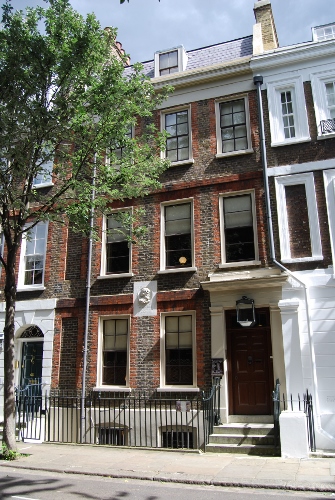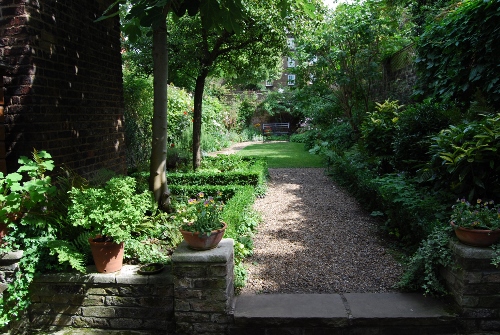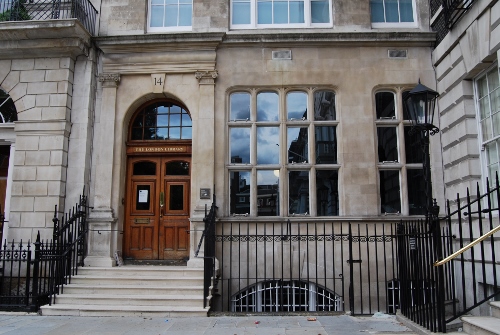The only known surviving diaries of a Victorian regional newspaper editor were penned by my great great uncle Anthony Hewitson who owned the Preston Chroniclein Lancashire. There are seventeen in number which span the years 1865 until his death in 1912 and they paint a colourful picture of what was going on in his house, up his street, in Preston, and elsewhere. In addition he found time to write twenty books, including the History of Preston.
At the age of thirty one Anthony had earned sufficient money to buy the Chroniclethrough honing his craft on newspapers from Kendal to the Midlands, along with regular freelance work stretching back to his teenage days when, as an apprentice compositor and typesetter on the Lancaster Gazette, he became correspondent for theManchester Guardian. What he brought to the Chronicle was a literary flair superior to that of other local journalists and a fondness for introducing his readers to famous personalities like Thomas Carlyle who was a leading philosopher, essayist, and satirical writer with controversial views on social issues. Arguably Carlyle was also the first person to achieve celebrity status.
The following diary entries are previously unpublished:
2nd October 1872
Today we met Major and Mrs German of Sevenoaks, whom my wife had accompanied to Charing Cross. We subsequently visited two silversmiths’ establishments and selected sundry articles for presentation in Preston to Major and Mrs German. Then we had dinner at Nicholl’s Restaurant, Regent Street. Later on I, my wife, Ambler and Andrew went to Chelsea. I proceeded to Cheyne Row to see Thomas Carlyle, the author. He had laid down so I agreed to call the next day. We all then went to see the Shakers in Little College Street.
3rd October 1872
Collecting an account or two. In afternoon to South Kensington Museum – a splendid place. Then I walked to Mr Carlyle’s in Cheyne Row and had a chat and a smoke with him. He is a fine, grisly, determined old man. On leaving went to International Exhibition where I met my wife, Ambler and Andrew. We passed through Horticultural Gardens then into Albert Hall and then went to inspect Albert Memorial opposite. At night wife and I walked down Strand and Fleet Street into Farrington Street making sundry purchases of toys etc for our children.
Thomas Carlyle was born in Ecclefechan, Dumfriesshire in 1795, attending Edinburgh University at the age of fourteen and becoming a mathematics teacher. In 1826 he married the intellectual Jane Baillie Welsh. They settled at Craigenputtock, a remote farm to the north. Despite its location Ralph Waldo Emerson, the American essayist who championed individualism, crossed the Atlantic to track down Thomas.
In 1834 the couple moved to London for Thomas to pursue his literary career, where they paid £35 a year rent for 5 (now 24) Cheyne Row, Chelsea, and where he would live for almost half a century. His list of important books includes The French Revolution (1837) which was a massive success. Amazingly his original manuscript, the first of three ultimate volumes, was given to John Stuart Mill for checking and his maid, mistaking it for rubbish, burned it.
As his star rose Thomas and Jane’s Chelsea home became the hub of literary life where they entertained a circle of famous A-list thinkers who were in tune with his innovative ideas, which had a profound effect on his own generation and the next. There was unstinting admiration and hero worship from friends like Mill, Dickens, Tennyson, the Brownings, Ruskin, Leigh Hunt and Darwin. Even Chopin played their piano. There was also a fan club of strong-minded women who left their mark on society, notably George Eliot and Harriet Martineau.



Their crowd was part of the Victorian tsunami of social, political, religious and scientific change, with Thomas and Jane at the helm. Because of their popularity amongst revolutionary and radical thinkers, feminists, and foreign settlers they were increasingly sought out to the point where queues must have stretched from their front door to the Thames. William Holman Hunt, painter of the pre-Raphaellite Brotherhood, revered Carlyle of whom he said ‘from his genius pure and simple [he] won worship of such a degree that it was treason at the time to limit the adoration offered at his shrine.’
The couple often received a bad press because of their fiery marriage and whilst there seems to have been frequent antagonism between these two finely-tuned individuals, evidence suggests they were fond of, and desperately needed, each other. Jane was such an accomplished and clever woman it is likely that in our day she would have been a success in her own right and when she died in 1866 Thomas was devastated.
Although Carlyle’s writings are no longer fashionable there is a lasting interest in the amazing number of surviving letters that were written between them, and to others. Thomas’s reputation of greatness lingers – evidenced by the magnificent statue of him in Cheyne Walk and the existence of the London Library of which he was the chief instigator. Campaigning in Parliament for the building of the National Portrait Gallery, Philip Henry Stanhope used Carlyle’s arguments to achieve his objectives and high above the main entrance, on the left, is a small bust of Carlyle.
In addition to the diary entries Anthony’s visit to Carlyle is described in detail in his book Places and Faces. He explains that when he pulled the bell of 5 Cheyne Row on the 3rd October 1872 he was let in by the housekeeper (who would have been Mrs Sarah Warren). It was twenty minutes before his hero appeared, for which he was grateful, as it gave him time to calm down and take in the surroundings which were ‘serious, plain and primitively substantial, no superficial or aesthetic arrangement of furniture for the sake of show and effect.’ Ultimately Thomas strode purposefully into the room ‘“tall, powerfully built, aged but erect” and said “Well sir, is there anything I can do for you?’”
The two men had much in common. Both were stonemasons’ sons, authors, radical thinkers, and religious dissenters. Interestingly their wives were strong women too. In Anthony’s case his wife Margaret was instrumental in his business, despite rearing seven children, and this included making journeys to London to buy such items as greetings cards. She also hired and fired even more servants than did Jane.
Anthony carried two chairs into the garden where he and Thomas sat facing each other in a cloud of tobacco from their churchwarden pipes. Thomas, who was wearing his famous ancient dressing gown and hat, was a heavy smoker, and had pre-stoked pipes hidden in the cracks of the garden walls. He spoke in a friendly manner, covering a variety of philosophies. “They were hopeful in tone; but he appeared to have a conviction that England’s trials, if not sufferings, would be great. In the House of Commons, he said, there was too much talk – too much talk of what he called ‘jannering’ or ‘jabbering’ – too many men in it whose primary objective was business and self,” wrote Anthony.
Eight years on the Preston Chronicle revealed: ‘Thomas Carlyle died on Saturday morning [5th February 1881] at his home in Cheyne Row, Chelsea, where for some days he had been lying in a state of hopeless prostration.’
On the 10th Anthony travelled to Ecclefechan with the Mayor of Preston, after which there was a lengthy and fascinating account in the Preston Chronicle. His diary entry says:
Thursday 10th February 1881
Met Alderman J Hibbert (Mayor of Preston). Proceeded to Ecclefechan. On getting to Carlisle overtook funeral party and rode with one of the undertakers forward. Funeral at about 12.35 in U[nited] P[resbyterian] Churchyard. No ceremony – not a word said or sung by anybody. Mr J A Froude, Mr Lecky and Professor Tyndall amongst those present.
The Carlyles’ home, opened as a literary shrine in 1895, was given to the National Trust in 1936. I pulled the same bell that the Carlyles’ friends and Uncle Anthony used all those years ago and the door was opened by a volunteer who gave me a warm welcome. She opened it for me again on departure, when I was bid a pleasant goodbye. This is one of the touches custodian Linda Skippings and her staff thoughtfully provide so that it feels more like you are visiting friends than a museum. It adds to the intimacy of a property that is lovingly cared for and has a Sleeping Beauty quality of a time stood still, where nothing seems to have been touched or altered since it fell asleep in 1881. I should not have been surprised if Jane and Thomas had walked into the room. They didn’t, so I went into the delightful peaceful garden where Thomas and Anthony had spent that hour together, but I passed on searching for hidden pipes.
Note: Diary entries – Extracted from the diaries of Anthony Hewitson held at Lancashire Archives, Preston. Reference DP512. Published with permission.

You must be logged in to post a comment.